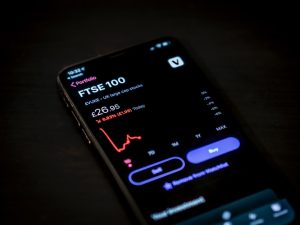Forex trading is a highly volatile market, where the prices of currencies can fluctuate rapidly. To make informed trading decisions, it is essential to understand and interpret forex volatility indicators. These indicators provide valuable insights into market conditions, helping traders identify potential opportunities and manage risks effectively.
Volatility indicators measure the degree of price fluctuations in currency pairs. They provide a statistical representation of how fast and how much prices are changing. By analyzing volatility indicators, traders can gauge the level of market uncertainty and adjust their strategies accordingly.
One of the most commonly used volatility indicators is the Average True Range (ATR). The ATR calculates the average price range over a specific period, typically 14 days. It measures the volatility by considering the highest high and the lowest low within each trading day. A higher ATR value indicates greater volatility, while a lower value suggests lower volatility.
Using the ATR indicator, traders can set appropriate stop-loss and take-profit levels. A wider stop-loss is recommended for highly volatile markets to avoid premature stop-outs. Conversely, in low volatility situations, tighter stop-loss levels can be used to protect profits. By understanding the ATR values, traders can adjust their risk management strategies accordingly.
Another popular volatility indicator is the Bollinger Bands. These bands consist of a moving average line in the middle, with two standard deviation lines plotted above and below. The width of the bands represents the volatility of the market. When the bands are narrow, it suggests low volatility, while wider bands indicate higher volatility.
Traders can use Bollinger Bands to identify potential trend reversals. When prices touch the upper band, it indicates overbought conditions, and a reversal may be imminent. Conversely, when prices touch the lower band, it suggests oversold conditions and a potential reversal to the upside. Additionally, when the bands contract, it suggests a period of low volatility, often followed by a breakout.
The Relative Volatility Index (RVI) is another useful indicator for interpreting forex volatility. It measures the strength of price movements relative to previous price movements. The RVI compares the percentage change between the current price and the previous close to the average percentage change over a specific period.
Traders can use the RVI to identify overbought and oversold conditions. When the RVI value exceeds a certain threshold, it indicates overbought conditions, suggesting a potential reversal. Conversely, when the RVI value falls below a specific threshold, it suggests oversold conditions and a potential buying opportunity.
The Volatility Index (VIX) is a widely known indicator that measures market expectations of near-term volatility. It is often referred to as the “fear index” as it reflects investors’ sentiment and risk appetite. A higher VIX value indicates higher market uncertainty and vice versa.
Traders can use the VIX as a contrarian indicator. When the VIX is at an extreme high, it suggests excessive fear in the market, which could be a sign of a potential buying opportunity. Conversely, when the VIX is at an extreme low, it indicates complacency and could signal an overbought market.
In conclusion, interpreting forex volatility indicators is crucial for making better trading decisions. By understanding these indicators, traders can assess market conditions, adjust risk management strategies, and identify potential opportunities. Whether using the ATR, Bollinger Bands, RVI, or VIX, traders should incorporate volatility indicators into their analysis to enhance their trading performance. Remember, volatility is a double-edged sword, and proper risk management is essential to succeed in the forex market.


